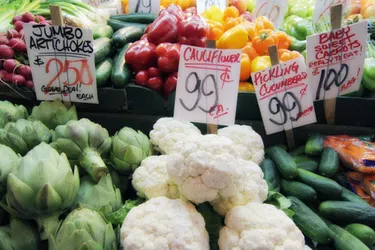
John Maynard Keynes created the consumption formula to show the relationship between disposable income and the total amount consumers spend. The formula is C = A + MD. That is to say, C (consumer spending) equals A (autonomous consumption) added to the product of M (marginal propensity to consume) and D (true disposable income). Keynes' formula is a staple in consumer economics.
Step 1
Determine which of your regularly-scheduled bills are essential. These are bills that would need to be paid even if you were unemployed, such as rent, utilities and groceries. Do not include non-essential bills for things like cell phones, life insurance or medical insurance.
Video of the Day
Step 2
Determine the minimum amount you can pay towards these bills.
For instance, if you conversed water and electricity, determine the smallest utility bills you could receive. If you bought smaller amounts of less-expensive food, determine the smallest groceries bill you would need to pay.
Step 3
Add these minimum, essential bills together. This is your autonomous consumption--the minimum amount of consumption that would continue to exist even if you were unemployed.
Video of the Day